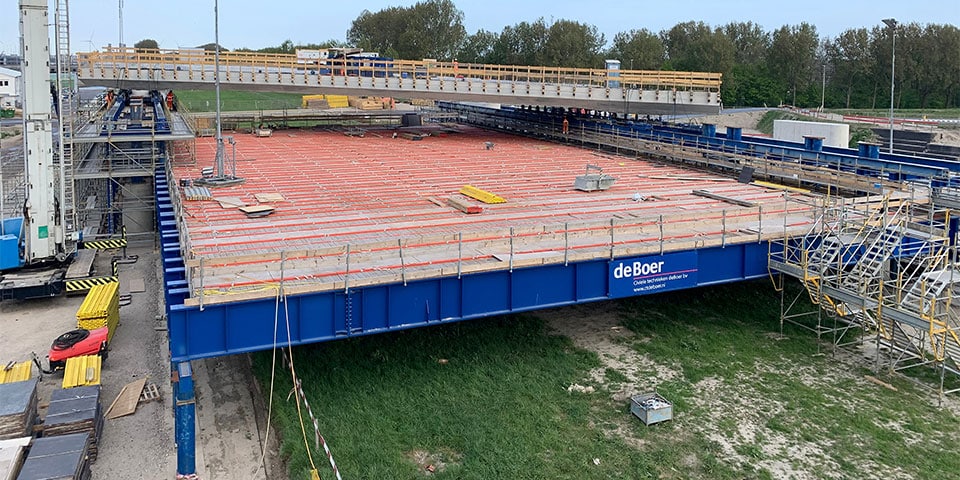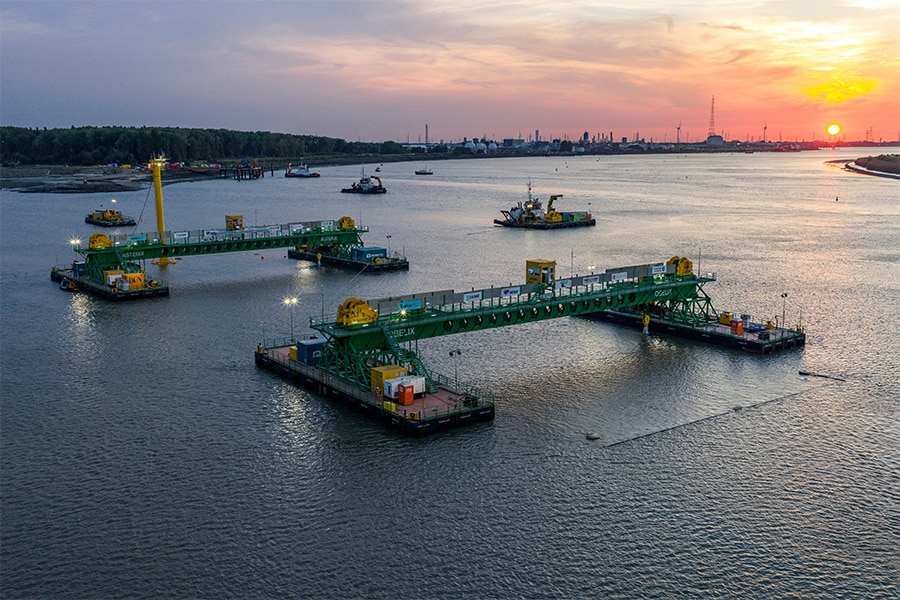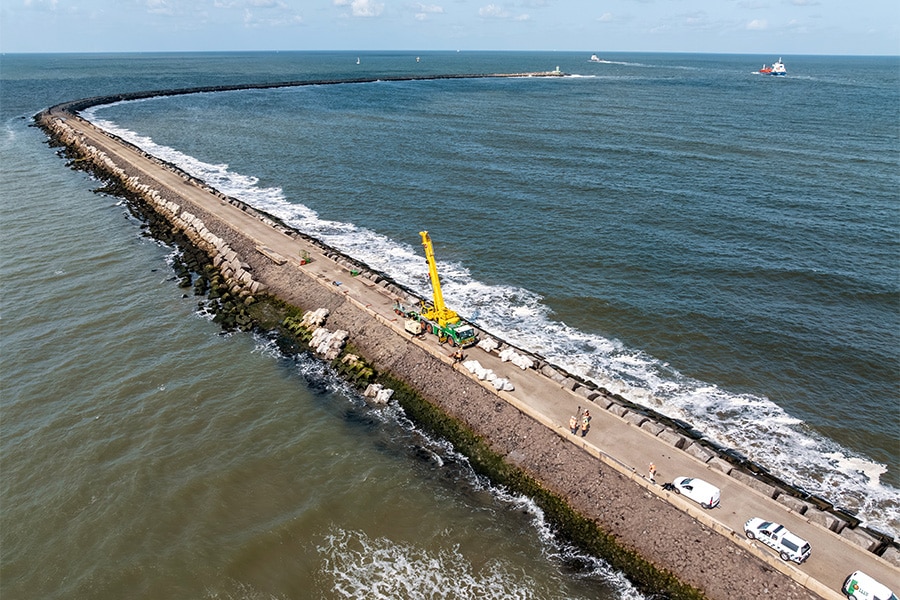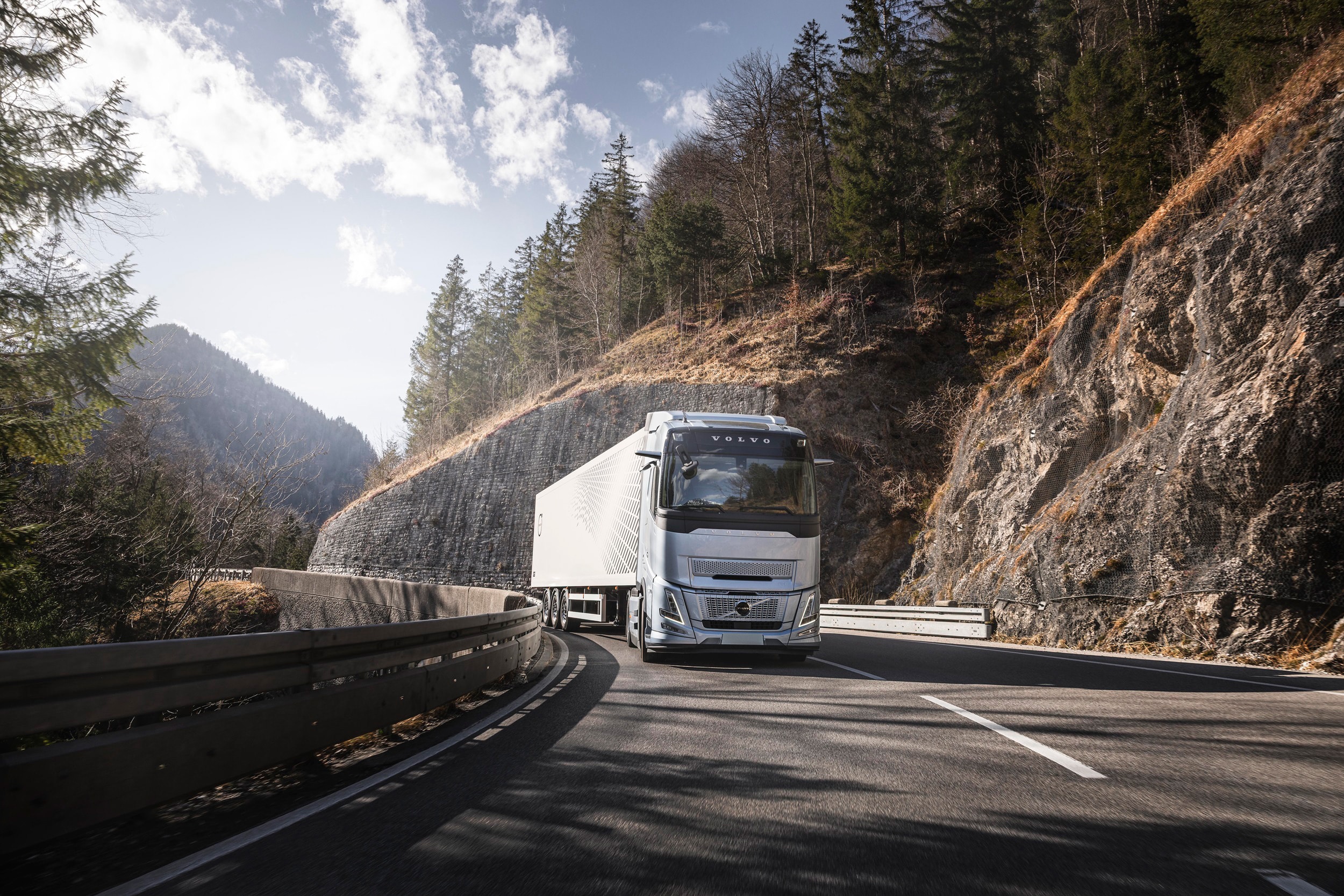
Jacking, sliding and pressing
Innovative and sometimes 'out of the box' thinking often leads to the smartest solutions. Speaking is Joost Beumer of Civiele technieken deBoer, internationally active for more than forty years in the world of jacking, sliding and pressing. In consultation with the construction consortium BAAK, a unique and multifunctional auxiliary structure with a free span of 34 meters was devised in the tender to serve as temporary support for the construction of no less than four decks of structures on the Blankenburg connection.
Some of the structures on the Blankenburg connection are being built in complicated locations. For example, two viaducts are being built in situ above a crucial (and vulnerable) cable and pipeline route of the Port of Rotterdam Authority and two flyovers above the A15 motorway. To ensure undisturbed construction, Civil Engineering deBoer was called in to design a temporary support structure. "The support structure was designed as a table structure and is reusable for four structures with a limited number of technical modifications," Beumer explains.

Slider
During construction of the decks for two of the overpasses, the support structure was set up as a table over the cable and pipeline route. "The decks could be built successively unhindered on the platform," Beumer continued. "First, a 3,000-ton deck was poured into formwork on our support structure. After tensioning the deck, the 'colossus' was pushed to its final position, 45 meters away, at the end of May this year via a sliding mechanism in our support structure. Then another deck was built on the same platform (3,300 tons) which we jacked off 3.20 meters to its final position at the end of September this year. Now the support structure is being dismantled, tweaked here and there and rebuilt above the A15 so that BAAK can build the next decks there."
For the construction of the structures above the A15, it was decided to move the support structure rather than move the decks. Beumer: "We first build the platform at the final position of the first deck. Once finished, we move the table structure over a distance of about 50 meters to the position where the second flyover will be built. Here the 4,000-ton bridge deck is built and then jacked over a height of 4.50 to its final position. For a fifth flyover, the deck will be built elevated, for which we provide the jacking. All in all, for us an intensive project with a lot of coordination. That does pay off in a controlled and safe process."



